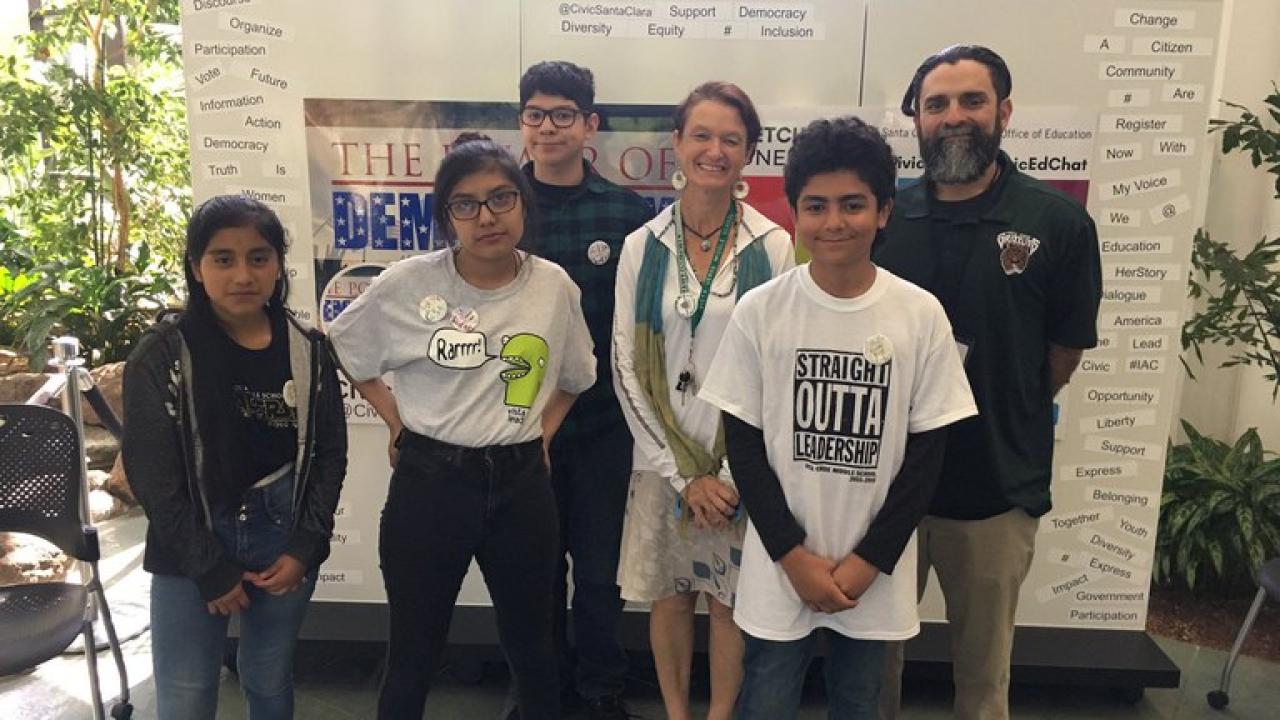
Inclusive Literacy in History-Social Science
by Jennifer Elemen, Stephanie Enriquez, Olivia Santillan, and Beth Slutsky
Editor's note: this guest blog post is one in a series focused on our new HSS Framework Conference series, which opens September 10 at UC Irvine. For more information about this workshop and to register for the conference, visit: https://chssp.ucdavis.edu/programs/framework
In order for California’s students to be empowered with voice, choice, and agency in their lives, they must be able to read, write, listen, and speak. 8th-grade U.S. History teacher Matt Garcia from Vista Verde Middle School in Greenfield, California knows this well and has carefully planned his curriculum to connect the content, literacy, skills, and civic dispositions to his student population. A significant percentage of Matt’s students are emergent bilingual Spanish speakers/ English Learners; and a majority of his students are Latinx and economically disadvantaged. Matt deliberately integrates GLAD (Guided Language Acquisition Design) English Language Development (ELD) strategies within the History Day Project Based Learning (PBL) Unit in his class. What this looks like for his 8th-graders is that they are encouraged to identify topics they would like to research in greater depth, connected to the annual historical theme and their grade level standards. With these customized topics, Matt’s students engage in collaborative inquiry, and present their findings to audiences at their schools, county, and statewide. They are inspired to make history come alive in the present and the future.
Until recently, some history-social science teachers have been reluctant to acknowledge the important role they play in developing discipline-specific literacy skills in their students. Today, teachers like Matt embrace the fact that if all students are to develop a sense of their place in the world, and to learn the depth and complexity of the past, that language and literacy instruction is necessarily a part of this. Discipline-specific literacy instruction is at the core of making content understanding universal and achievable to all students. Our new series of History-Social Science Framework conferences feature several sessions that highlight the important ways that literacy and history-social science instruction are inextricably connected. Practical literacy strategies and lessons bring to life the important ways of helping students learn to read, think, and communicate in their discipline.
Universal Design for Learning (UDL) highlights how history-social science educators have a responsibility to consider the variability of our students and plan high quality inclusive and equitable instruction. Planning integrated instruction aligned to the History-Social Science Framework, with the Universal Design for Learning (UDL) Framework and addressing English language proficiency; in addition to addressing the California Standards for Literacy in History/Social Studies, Science, and Technical Subjects, requires multiple considerations. The UDL framework and guidelines are powerful tools to support designing instruction, learning environments and assessments that address variability and allow educators to meet the needs of their diverse student population.
English learners (ELs), and really all students, benefit from scaffolded literacy instruction. Learning about text type and features, highlighting essential vocabulary/concepts, and other contextual knowledge helps to access text. Teachers empower their students to become independent readers when they adopt general literacy pre-reading strategies such as asking students to notice the title, author, type of source/text, headings, organization of the text, what they think the text will be about, and its purpose. Photographs, artwork, artifacts, realia, maps, are additional ways to make content accessible for all students; coupling this with student-to-student conversations to develop their own meaning will build confidence and autonomy. When transitioning to building academic language, instruction must be intentional and purposeful with clear goals, therefore, after the meaning making opportunity, instruction must be strategically planned for students to meet the expected content and language goals.
Discipline-specific literacy instruction also allows inquiry to be a central feature of the classroom. The History-Social Science Framework frames material with guiding questions from the teacher as well as student-created questions. Opening questions activate students’ background knowledge; observation charts, posting pictures and artifacts, and asking students what they think, notice, and wonder also encourage students to interact with material in new ways. Throughout the lesson, students should be given time to engage in metacognition and academic conversations around their learning to establish the foundational knowledge they will apply while analyzing primary source documents and for deeper learning. It is imperative that students receive on-going feedback that helps them understand where they are at on the continuum of meeting content and language goals. Feedback coupled with reflection empowers students to identify and articulate their needs as well as what tools and strategies best support their learning and growth. Discipline-specific literacy skills can then be transferred to other subjects and real-world challenges that students help to solve when they communicate conclusions and take informed civic action.
Jennifer Elemen, Ed.D. is Educational Administrator of Language & Literacy, History-Social Science-Civics at the Monterey County Office of Education. Stephanie Enriquez is History-Social Science/ELD Content Specialist at the Ventura County Office of Education. Olivia Santillan is Coordinator of History-Social Science and Civic Engagement on the Multilingual and Humanities Education Team at the Santa Clara County Office of Education.
